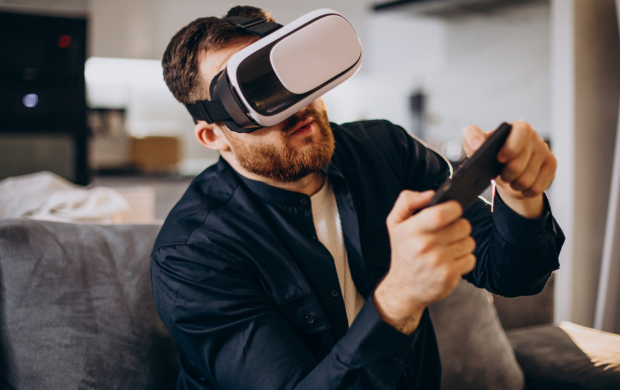Live dealer tables work when players feel present. Camera angles, dealer energy, and table chat all nudge that feeling. VR and AR raise the ceiling by putting depth, scale, and context back into a screen-first format.
Platforms setting the pace
Studios experiment with head-mounted views and room-scale sets, but adoption follows user comfort. Casinos that pair new tech with clean UX see better engagement than flashy demos. A good benchmark is Bets.io, which focuses on authentic, smooth navigation and device-friendly play. That type of foundation makes VR or AR layers feel like an upgrade, not a detour.
What VR changes at the table
VR turns a flat stream into a shared space. Players see a true table edge, sit angle, and chip distance. That spatial memory reduces hesitation on routine actions and keeps eyes on the shoe, not the UI.
VR also boosts social cues. Avatars and spatial audio help players notice timing tells, quick reactions, and dealer rhythm. Those micro signals get lost in 2D. To keep it practical, studios keep controls simple and readable at arm’s length, not hidden in nested menus.
Here is where VR adds clear value without overcomplicating play:
- Natural chip grabs and bet placement feel faster than tapping tiny buttons.
- Seat perspective and depth help track wheels, dice arcs, and burn cards.
- Spatial audio keeps table talk clear while muting room noise.
Sustained sessions still need comfort checks. Frame stability, text legibility, and quick exit flows decide whether players stay past 15 minutes.
How AR lifts the live view
AR leaves players in their rooms and upgrades the stream with data on top. That means context at a glance rather than a new device habit. Overlays can show seat occupancy, shoe penetration, or roulette sector heat without covering the dealer.
Smartphone AR also helps onboarding. A phone can pin a mini table on a desk for low-risk practice, then deep-link into the full room. Head-worn AR can anchor bet slips beside the stream so totals and limits are always visible.
Practical AR wins look like this:
- Context cards show limits, side bet payouts, and session stats.
- Gesture or gaze selects chips while the other hand stays free.
- Table rules pop in when hovering over actions, then fade out fast.
Evidence and adoption
AR and VR are not hype-only features. Statista reporting notes AR user penetration near 81% in 2024 in the UK, with a projected rise toward 83.3% by 2029, led by younger cohorts. Byte Plus research on gaming points to faster rendering and lower development complexity for AR pipelines, which shortens iteration cycles for studios. For a plain-English primer on augmented reality concepts and use cases, see this overview of augmented reality.
These data points explain the trend seen in live rooms. AR rolls out first on phones because it rides existing habits. VR arrives in themed tables and event nights where players accept headsets for a stronger sense of place.
Design that earns repeat play
Good design hides the tech. Players should read felt textures, not settings screens. Latency budgets stay tight so bets lock cleanly before no-more-bets. Dealers get prompt panels that show player intent without breaking eye contact.
Session health is part of the craft. Clear battery indicators, heat warnings, and seated mode toggles protect comfort. Table chat needs moderation tools that work with voice and text so the room stays friendly.
What operators can ship today
Teams that want results focus on simple, measurable upgrades. Start with AR overlays on mobile streams. Add VR seats to a single flagship table, not the whole lobby. Train dealers on camera awareness and voice pacing for spatial audio.
A staged plan keeps risk low and insight high: launch, measure dwell time and repeat visits, then expand. Players feel the difference when immersion supports decisions and conversation instead of distracting from them.
The bottom line for live casino
VR and AR help live tables feel present, social, and readable. VR restores space and sound. AR adds context without leaving the real world. When built on a solid platform like Bets.io and delivered with restraint, these tools lift engagement while keeping play familiar and fair.








